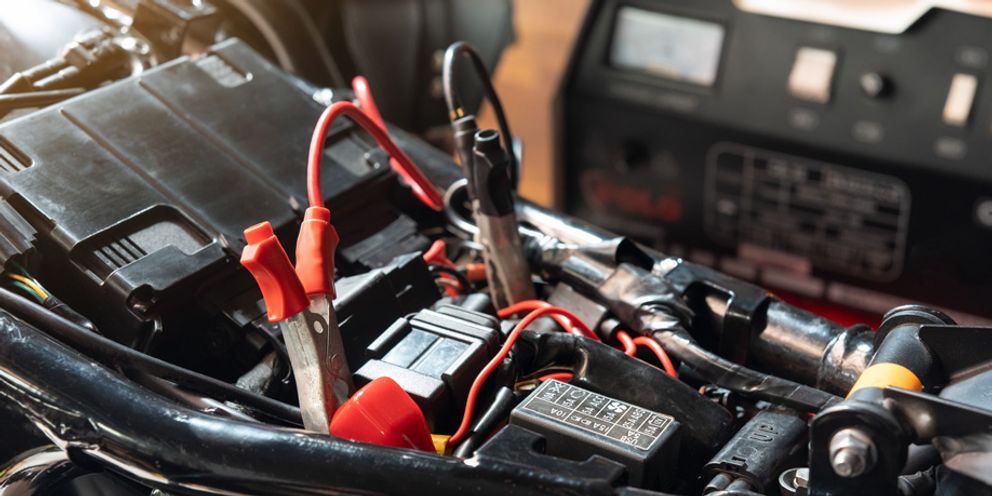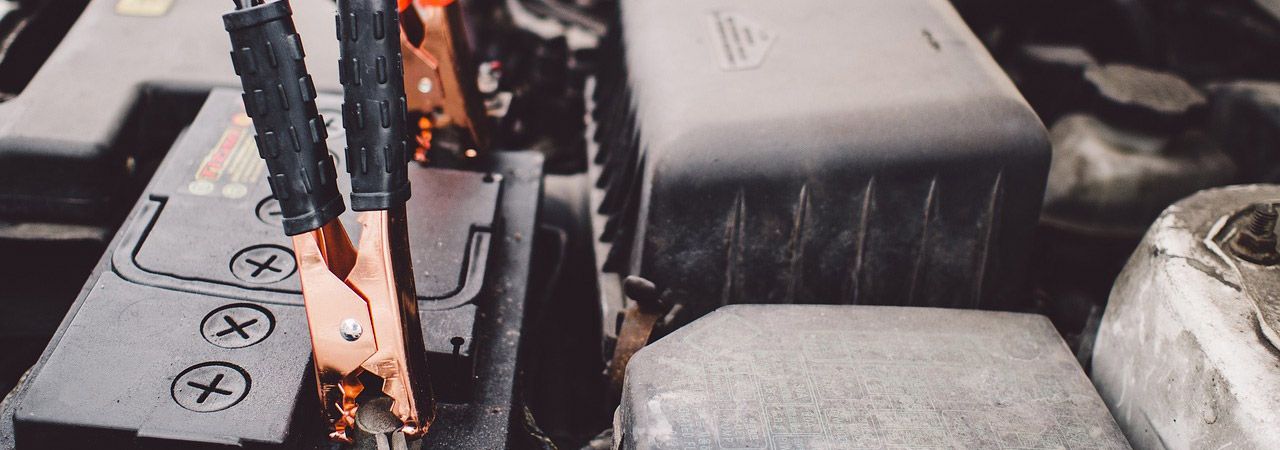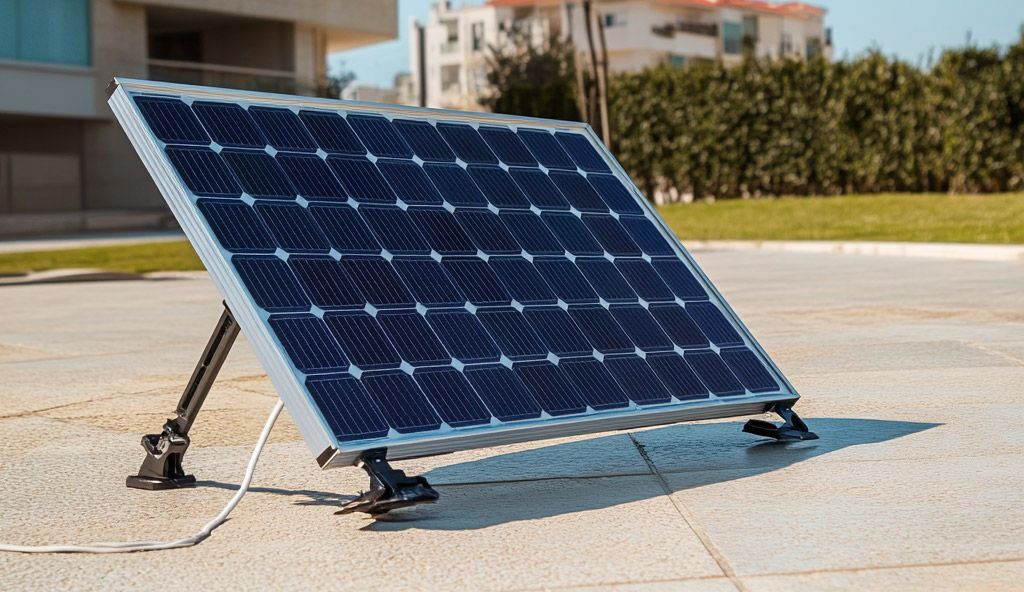
What is a trickle charger?
Featured Image: Trickle Charger | Photo by kasarp on Adobe Stock
Have you ever experienced the frustration of a dead battery? Whether a car, a boat, or a lawnmower, a dead battery can throw a wrench into your plans. A solution exists that can help prevent this inconvenience: the trickle charger!
What is a trickle charger, and why do people use them?
In summary, a trickle charger is a device that delivers a continuous, low-intensity charge to a battery to counteract its self-discharge and keep it fully charged. People use trickle chargers to maintain the charge of various batteries, including those in cars, motorcycles, boats, and garden equipment.
A trickle charger can prolong lifespan, improve performance, and the peace of mind of always having a fully charged battery. So, why not invest in a trickle charger today and say goodbye to the frustration of dead batteries? Your battery will thank you!
How Trickle Chargers Work: The Science Behind the Technology
Trickle chargers. Also known as maintenance chargers or battery maintainers, these are devices designed to keep your battery fully charged without overcharging it. Unlike standard battery chargers, which deliver a high current to charge quickly, trickle chargers work by providing a low, constant current. This slow charging process prevents the battery from losing its charge over time.
Trickle chargers typically use a low-amperage charging mode to deliver a continuous flow of electricity to the battery. This mode is perfect for long-term maintenance, maintaining the charge level without generating excessive heat or damaging the cells. By keeping the battery at its optimal voltage, trickle chargers extend its lifespan and increase its overall performance.
One fascinating aspect of trickle chargers is their ability to detect the charge level and adjust the charging rate accordingly. This intelligent charging system ensures that the battery receives the right amount of power at all times, preventing overcharging and undercharging. Some advanced trickle chargers even come equipped with microprocessor-controlled technology that monitors the condition and adjusts the charging parameters for optimal performance.
Furthermore, trickle chargers have various applications: cars, motorcycles, boats, RVs, and solar power systems. Their versatility and efficiency make them a popular choice for maintaining the health of various types of batteries, ensuring that they remain in top condition for extended periods. With their reliable performance and user-friendly design, trickle chargers have become essential tools for battery maintenance in both personal and professional settings.
Understanding the Basics of Trickle Charging
To understand how trickle charging works, take a closer look at the components of a typical trickle charger:
- Power Input: Trickle chargers are usually connected to a standard electrical outlet for power.
- Transformer: Converted into a lower voltage and current suitable for trickle charging.
- Rectifier: This component converts the alternating current (AC) from the transformer into direct current (DC) for charging.
- Control Circuit: The control circuit regulates the charging process by monitoring the voltage and adjusting the charging current accordingly.
- Output Leads: These leads connect the charger to the terminals and deliver the charging current.
When connected to a battery, the trickle charger supplies a continuous, low-intensity charge that counteracts the self-discharge rate and maintains its charge level. This slow charging process keeps the battery fully charged, preventing the formation of harmful sulfation on the battery plates, which can significantly reduce its capacity and lifespan.
Trickle chargers, intended to stay connected to the battery for extended periods, can stay connected without overcharging. The control circuitry ensures that once the battery reaches full charge, the charger automatically switches to a maintenance or float mode, providing a small trickle of current to compensate for any self-discharge without causing any harm to the battery.
Trickle chargers are most commonly used on vehicles and equipment used infrequently, such as seasonal vehicles like motorcycles, boats, or classic cars. Keeping the battery topped off with a trickle charger when not in use can prolong its lifespan, ensuring it's always ready to go when needed.

Benefits of Using a Trickle Charger for Your Battery
- Prolong Battery Lifespan: By preventing over-discharge and sulfation, trickle chargers extend the lifespan of your battery, saving you money in the long run.
- Convenience: With a trickle charger, you don't have to worry about your battery running out of power when you need it the most. It keeps your battery ready for action at all times.
- Improved Performance: Regular trickle charging helps maintain the voltage and capacity of your battery, ensuring that it functions at its best.
- Wide Range of Applications: Trickle chargers are versatile tools used with various types of batteries, from automotive to deep-cycle batteries used in marine applications.
With these advantages in mind, you can understand why trickle chargers are must-have accessories for anyone who relies on batteries for their vehicles or equipment.
Furthermore, trickle chargers are not only beneficial for extending battery life but also for environmental reasons. Keeping a battery in optimal condition reduces the need for premature replacements, decreasing the number of batteries ending up in landfills. This eco-friendly aspect of trickle chargers aligns with sustainable practices and contributes to a greener future.
In addition to the environmental benefits, using a trickle charger can save you time and hassle. Imagine never having a dead battery in a rush or facing an emergency. With a trickle charger maintaining your charge levels, you can have peace of mind knowing that your vehicle or equipment will always be ready to go whenever you need it.
Applications for Trickle Chargers
- Automotive: Trickle chargers are ideal for keeping your car fully charged during long periods of inactivity, such as storage or vacations.
- Motorcycles: Motorcycle batteries can lose their charge quickly if not used frequently. A trickle charger helps maintain the charge and extends its lifespan.
- Marine and RV: Boats and recreational vehicles often have multiple batteries that require regular maintenance. Trickle chargers are perfect for keeping these batteries in top condition.
- Lawnmowers and Garden Equipment: Trickle chargers enable you to keep your lawnmower and other garden equipment batteries fully charged, ensuring they are always ready for use.
Regardless of the application, a trickle charger offers a convenient and reliable solution for maintaining the charge of your batteries, saving you time and frustration in the long run.
Comparing Trickle Chargers to Other Charging Methods
Trickle chargers are just one of the many charging options available. Below, compare them to other commonly used charging methods.
Standard Chargers
Standard chargers, also known as fast chargers, are designed to quickly charge a battery by delivering a high current. While they are effective at rapidly recharging a battery, they can be more challenging for long-term maintenance, as the high current can cause overheating and damage.
Solar Chargers
Solar chargers use sunlight to generate electricity and charge the battery. They are portable and environmentally friendly, making them an excellent option for outdoor enthusiasts. Solar chargers rely on the sun and may not be as reliable as trickle chargers for maintaining a consistent charge in all weather conditions.

Smart Chargers
Also known as intelligent chargers, these advanced charging devices use microprocessors to monitor and control the charging process. They typically offer multiple charging modes, including trickle charging, and can automatically adjust the charging current and voltage based on the condition. While smart chargers can provide more precise charging and additional features, they are often more expensive than basic trickle chargers.
When comparing these charging methods, consider your specific needs and budget. Trickle chargers provide a simple and cost-effective solution for long-term battery maintenance, making them an excellent choice for most users.
Safety Tips for Using Trickle Chargers
While trickle chargers are generally safe to use, it is crucial to follow some safety tips to ensure a trouble-free charging experience:
- Read the Manual: Always follow the manufacturer's instructions before using a trickle charger. Each charger may have specific guidelines and safety precautions.
- Choose the Right Charger: Make sure your selection is for use with the battery type and voltage. Using an incompatible charger can damage the battery or pose a safety risk.
- Charge in a Well-Ventilated Area: To avoid the accumulation of potentially explosive gases, such as hydrogen, always charge your battery in a well-ventilated area.
- Avoid Overcharging: Leaving a battery connected to a trickle charger for an extended period can overcharge it and reduce its lifespan. Be mindful of the recommended charging times for your specific battery.
- Inspect the Charger and Cables: Regularly inspect the charger and cables for any signs of damage, fraying, or overheating. If you notice any issues, stop using the charger and contact the manufacturer for assistance.
By following these safety tips, you can use them with confidence, ensuring longevity and minimizing potential risks.
Updated